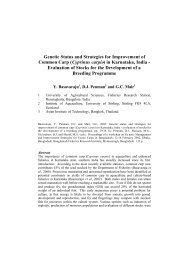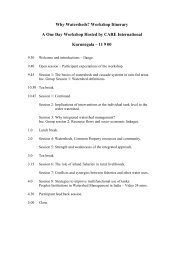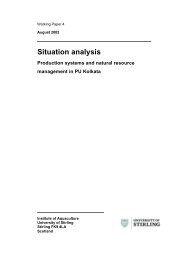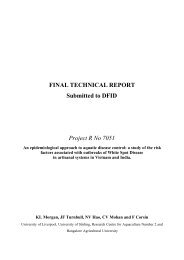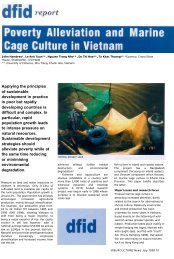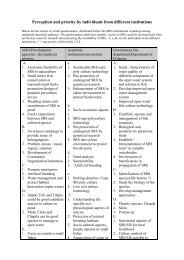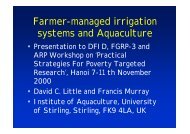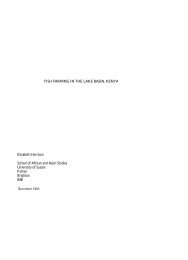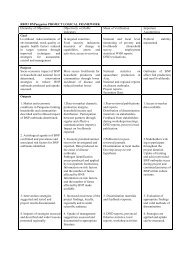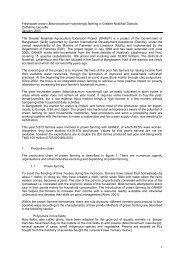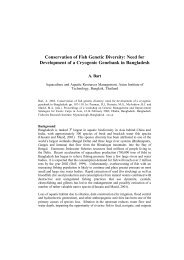Epizootic Ulcerative Syndrome (EUS) Technical Handbook
Epizootic Ulcerative Syndrome (EUS) Technical Handbook
Epizootic Ulcerative Syndrome (EUS) Technical Handbook
You also want an ePaper? Increase the reach of your titles
YUMPU automatically turns print PDFs into web optimized ePapers that Google loves.
Environmental FactorsCurrent findings indicate that normal skin defences must be compromisedin some way before Aphanomyces invadans can attach to the skin and invadeunderlying tissues. Given that <strong>EUS</strong> outbreaks are usually seasonally recurrent,it is likely that a number of biotic and/or abiotic factors, influenced byseasonal changes, play a role in lesion induction and/or in the availability ofinfective forms of the fungus.Several studies have examined possible associations between <strong>EUS</strong> outbreaksand changes in seasonal factors and water quality variables.TemperatureBoth low and high temperatures appear to influence outbreak occurrence andit is likely that these influences at least partially explain the seasonallyrecurrent pattern of <strong>EUS</strong> outbreaks.Low temperatures appear to influence the severity of <strong>EUS</strong> lesions, and hencethe severity of an outbreak, by impairing the ability of individual fish tocontain and inactivate the invasive fungus. Chinabut et al. (1995) injectedstriped snakehead with A. invadans zoospores and showed that theinflammatory response was less pronounced, fungal invasion was moreextensive, and mortality rates were higher, in fish kept at 19 o C comparedwith fish kept at 26 o C and 31 o C.Field studies also suggest that low temperatures are an important determinantfor some, but not all, <strong>EUS</strong> outbreaks. Rodgers and Burke (1981) associatedmaximum <strong>EUS</strong> prevalence in estuarine fish populations with seasonalaggregations of fish stressed by low or rapidly changing water temperaturesand rapid or prolonged depressions of salinity. Some <strong>EUS</strong> outbreaks infreshwater fish in Asia have occurred during periods of declining and/orunstable temperatures. During 1988 and 1989, outbreaks at sites inBangladesh, China, India and Lao PDR occurred during months in which themean daily temperature was below the annual mean daily temperature(Phillips and Keddie, 1990). However, outbreaks in the Philippines andThailand have also been recorded in warmer months (Phillips and Keddie,1990) suggesting there is no consistent relationship between <strong>EUS</strong> outbreaksand low temperatures. Diurnal temperature fluctuations of 10 o C were recordedduring outbreaks in both Bangladesh and the Philippines (Phillips andKeddie, 1990).Studies in the Philippines (Lumanlan-Mayo et al., 1997) suggested thatoutbreaks in rice-fish plots will not occur when maximum diurnal watertemperatures remain at >30 o C. It is likely that the causative fungus issubstantially inactive at these temperatures. A. invadans hyphae grow onlypoorly at temperatures above 31 o C and do not grow at 37 o C (Hatai and Egusa,25




